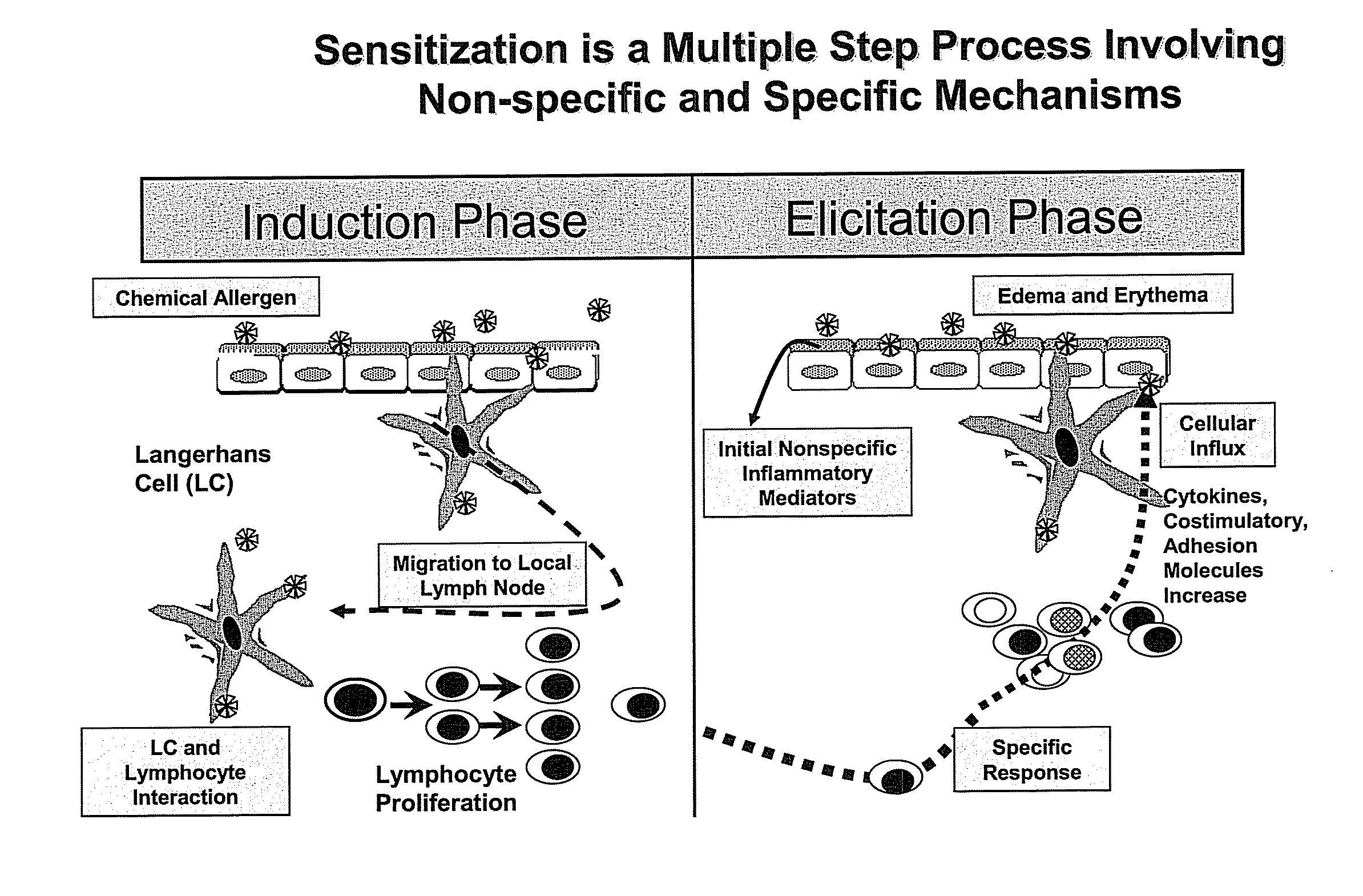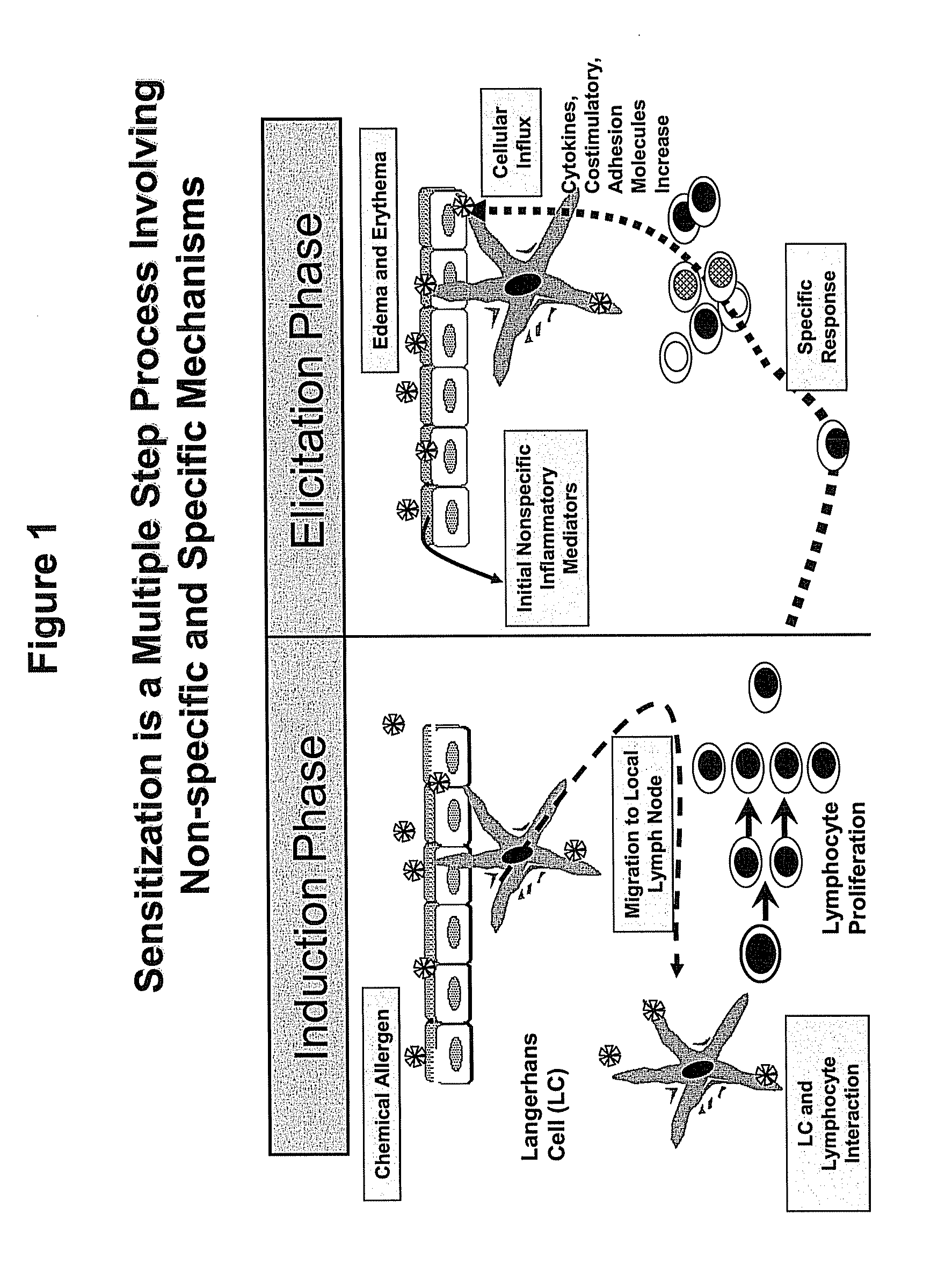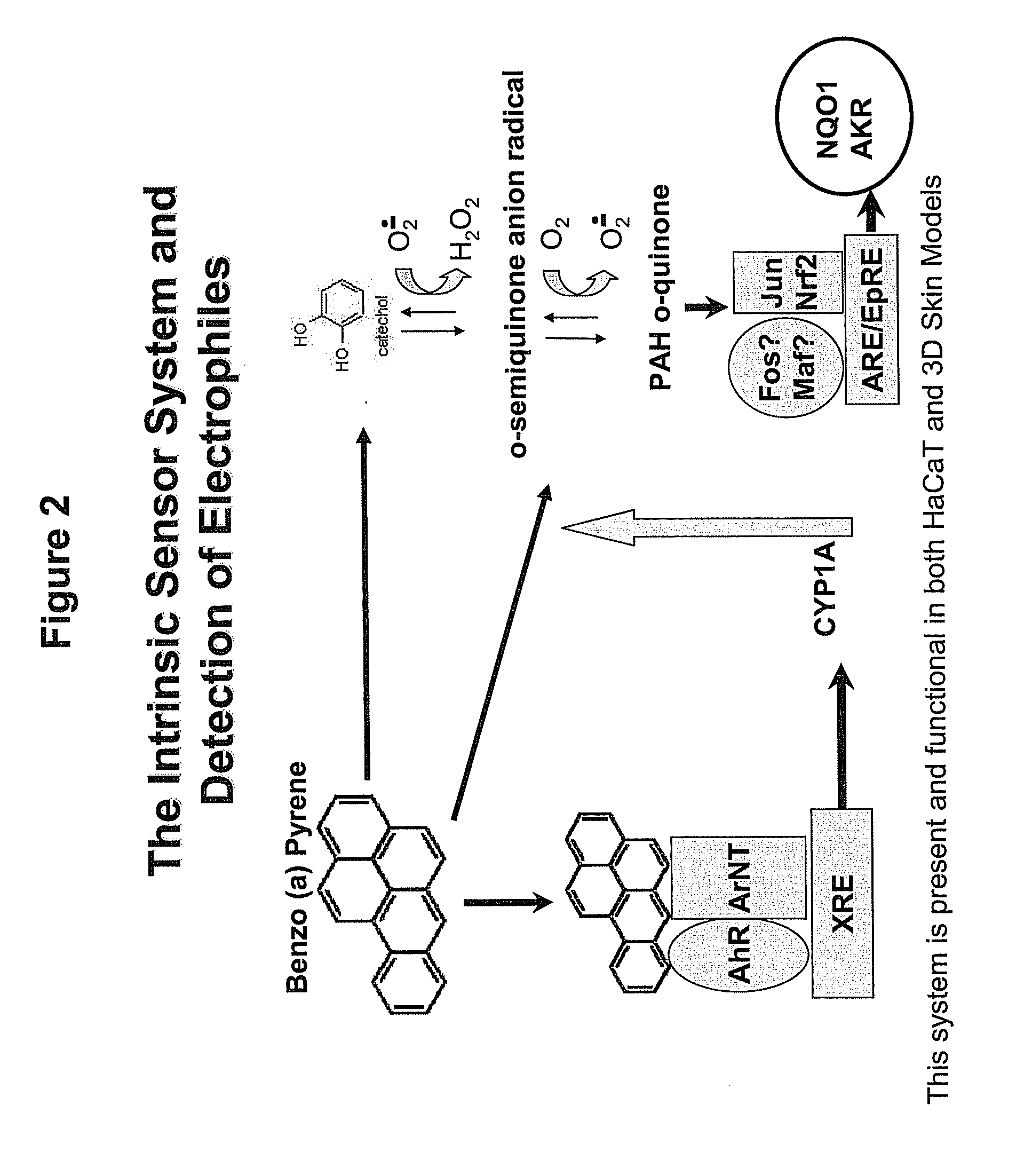Method for Predicting Skin Sensitizing Activity of Compounds
a skin sensitization and compound technology, applied in the field of in vitro, can solve the problems of chemical sensitization, limited or completely banned animal use, and system does not provide in vivo or animal responses
- Summary
- Abstract
- Description
- Claims
- Application Information
AI Technical Summary
Benefits of technology
Problems solved by technology
Method used
Image
Examples
example 1
[0066]As shown in Table 2 (below), preliminary data were collected and used to build the algorithm for predicting the sensitization. NQO1 is quinone reductase; IL-8 is interleukin-8; and AKR is aldo-keto reductase.
TABLE 2SensitizerLLNACompoundClassE3CNQO1IL-8AKRDMSOPhthalic AnhydrideStrong10.8+++++Propyl GallateStrong15.09++++++IsoeugenolModerate110++++Benzyl CinnamateWeak773++−−−++Phenyl BenzoateWeak863++−−−−VanillinVery Weak>3000+−−−−−−−−Benzoic AcidNon-−−−−−−−−−−−−−−sensitizer
[0067]The compounds listed in Table 2 are known skin sensitizers with different magnitudes of effect. In this example, three gene markers are measured to develop a relationship between the magnitude of response, the number of genes responding above about 15%, and the minimum exposure concentration where expression occurred. The ++ signs indicate positive response and the number represents the magnitude of response. The dashed lines indicate no measurable response. Based on these data, an “in vitro sensitizat...
example 2
[0069]Direct and indirect chemical reactivity of a test agent is determined using a glutathione depletion assay with and without metabolizing enzymes. A 100 mM stock of phosphate buffered saline (PBS) at pH 7.4 is used as the testing medium. Reduced glutathione (GSH) and the test compound are added in a ratio of 1:100. The reaction mixture is allowed to incubate at room temperature for 15 min. Following the incubation period the amount of free GSH or GSH not bound to test compound is measured. The same experiment is performed in the presence of 0.5 mg / mL microsomal protein from human liver in order to identify those chemicals that require metabolic conversion to reactive intermediates.
example 3
[0070]In order to test for dermal sensitizers in a species and organ specific model, human immortalized keratinocytes (HaCaT) are used for compounds that demonstrate good water solubility. The cells are cultured in standard media at 37° C. with about 5% CO2. The test compounds are added to media or applied directly to the air interface surface. Several exposure concentrations are included; typically 6 to 8 concentrations are employed. Following a 24 hr exposure the expression levels of several genes controlled by the ARE / EpARE promoter are monitored by RT-PCR. Cell viability is also determined for each test agent. For each chemical tested the three with the lowest variation across all exposures are pooled and used to normalize target gene expression data (FIG. 6).
[0071]Following a 24 hr exposure, induction of the target genes in treated relative to non-treated or control groups are determined. The fold increase for each exposure concentration is placed in an input file. Cell viabili...
PUM
| Property | Measurement | Unit |
|---|---|---|
| pH | aaaaa | aaaaa |
| chemical | aaaaa | aaaaa |
| chemical contact hypersensitivity | aaaaa | aaaaa |
Abstract
Description
Claims
Application Information
 Login to View More
Login to View More - R&D
- Intellectual Property
- Life Sciences
- Materials
- Tech Scout
- Unparalleled Data Quality
- Higher Quality Content
- 60% Fewer Hallucinations
Browse by: Latest US Patents, China's latest patents, Technical Efficacy Thesaurus, Application Domain, Technology Topic, Popular Technical Reports.
© 2025 PatSnap. All rights reserved.Legal|Privacy policy|Modern Slavery Act Transparency Statement|Sitemap|About US| Contact US: help@patsnap.com



